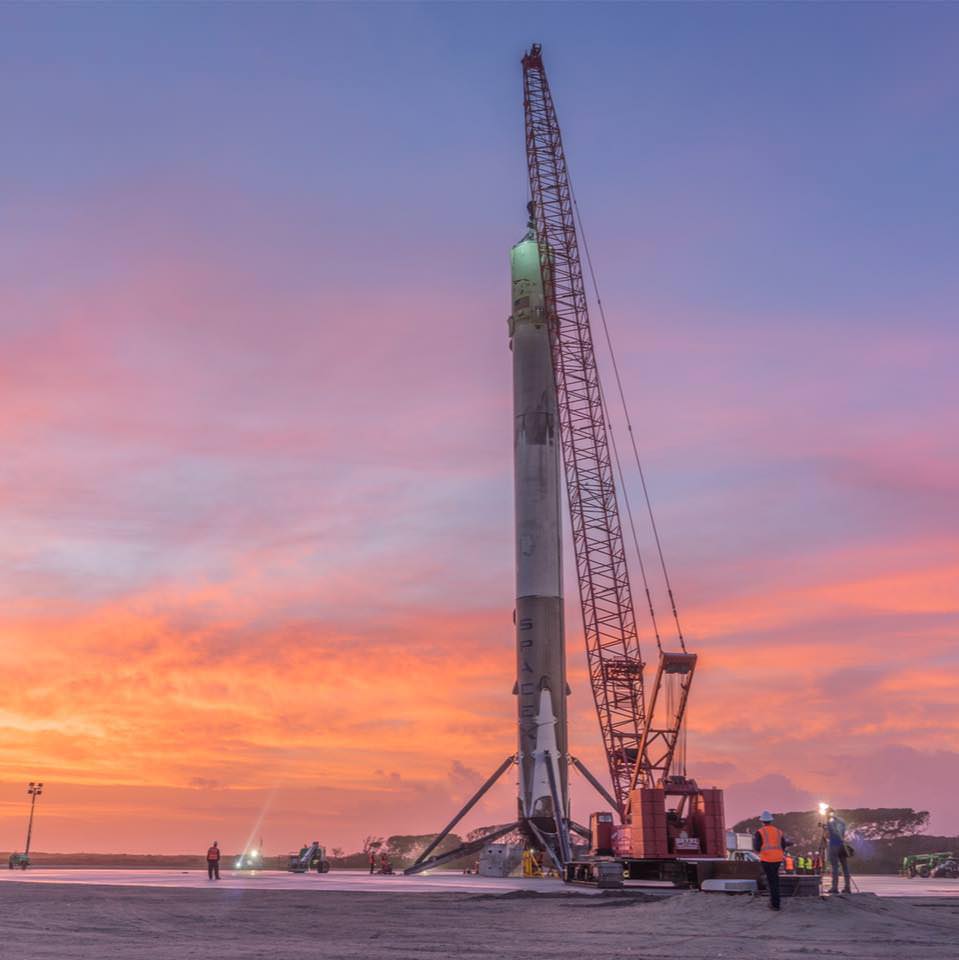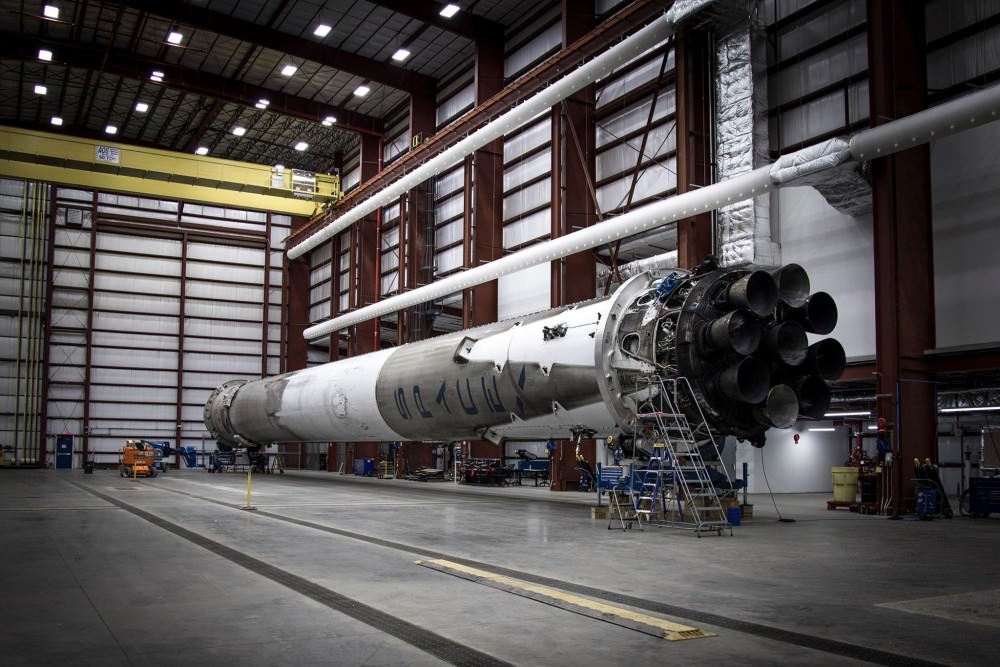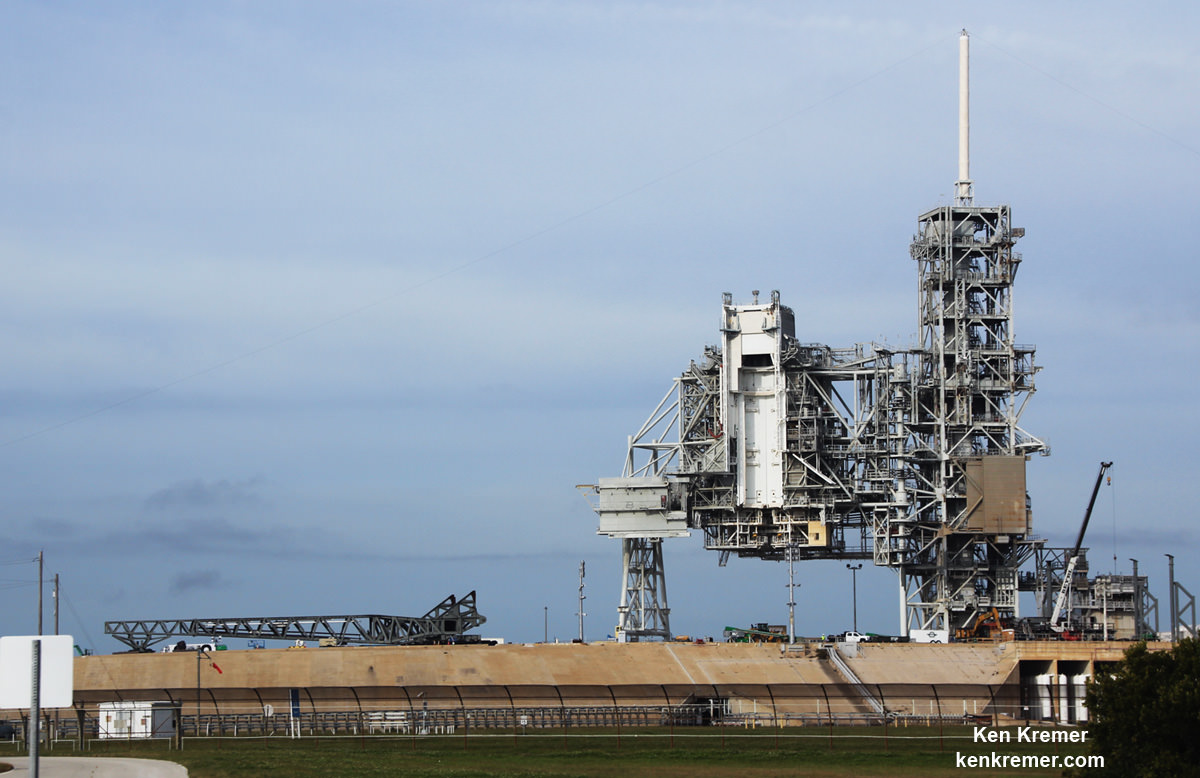
In a major advance towards the dream of rocket reusability, SpaceX successfully test fired the first stage engines of the Falcon 9 booster they successfully recovered last month – following its launch to the edge of space and back that ended with a history making upright landing at Cape Canaveral.
The re-firing of the engines from history’s first recovered rocket took place Friday evening, Jan. 15.
And the test results were initially confirmed by Hans Koenigsmann, SpaceX vice president for mission assurance during a media briefing, moments after it occurred.
“Apparently it went very well,” said Koenigsmann, at the pre-launch briefing for NASA’s Jason-3 mission set for blastoff on a Falcon 9 on Sunday, Jan. 17, at Vandenberg Air Force Base in California.

The static fire test of the 156-foot-tall first stage involved ignition of all nine Merlin engines and was carried out at the same pad from which it launched on Dec. 21, 2015 from Cape Canaveral Air Force Station, Fla and soft landed about 10 minutes later.
Proving that the recovered rocket can be refurbished with minimal maintenance and eventually reflown is critical to demonstrating the rocket reuse is economically viable.
The successful outcome of the test was announced by SpaceX billionaire founder and CEO Elon Musk.
“Conducted hold-down firing of returned Falcon rocket,” Musk tweeted overnight after an initial data review.
“Data looks good overall.”
During the static fire test, the Falcon 9 was held down in place at the launch pad at Space Launch Complex-40, as is customary, as the engines fire for several seconds.
However the duration of this particular test firing is not known at this time.
Musk noted that although the “data looks ok” there was an issue with one of the nine Merlin 1D engines, which are attached at the boosters base in an octoweb arrangement.
“Engine 9 showed thrust fluctuations,” Musk stated.
“Maybe some debris ingestion. Engine data looks ok.
Engineers are now inspecting the engine to precisely determine its condition.
“Will borescope tonight. This is one of the outer engines.”

Conducting the test at pad 40, amounted to a change in plans from what Musk had announced last month.
During a post launch briefing on Dec. 21, Musk stated that SpaceX would conduct the test firing of the recovered first stage at the Kennedy Space Center on historic Launch Complex 39A.
In fact the Falcon 9 booster was towed some 10 miles north from LZ-1 to pad 39A and brought inside a newly built SpaceX hangar for initial inspections. The rocket was then transported back to pad 40 and erected for the hot fire engine test.

Musk’s space vision is to radically slash the costs of launching people and payloads to space by recovering and reflying rockets – built individually at great expense – rather than completely discarding them after a single use.
Musk’s long term dream is to enable “A City on Mars” – as I reported earlier here.
The Dec. 21 upright landing recovery of the intact Falcon 9 first stage counts as a game changing achievement in the history spaceflight on the once fantastical road to rocket reusability and “A City on Mars.”
The primary goal of the Dec. 21 ‘Return to Flight’ launch was carrying a constellation of 11 ORBCOMM OG2 commercial communications satellites to low Earth orbit.
The next time SpaceX will actually try to recover a Falcon 9 first stage is less than 1 day way.
SpaceX is on course to try a 2nd rocket recovery landing of their Falcon 9 booster this Sunday, Jan. 17, following blastoff of the Jason-3 ocean monitoring satellite for NASA from Vandenberg AFB.
Stay tuned here for Ken’s continuing Earth and planetary science and human spaceflight news.
Video caption: Mobius remote video camera positioned at launch pad showing blastoff of the SpaceX Falcon 9 Orbcomm-2 mission on December 21, 2015. Credit: Ken Kremer/kenkremer.com
